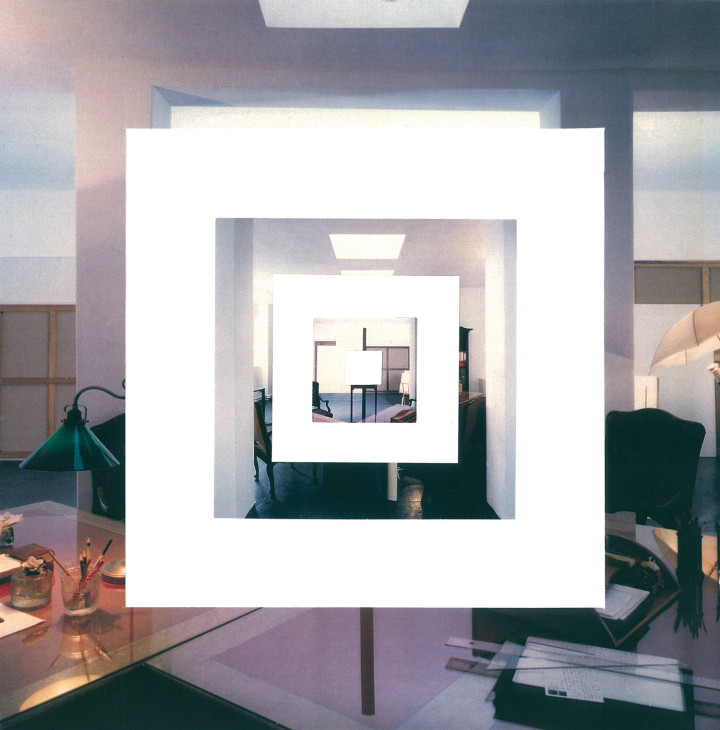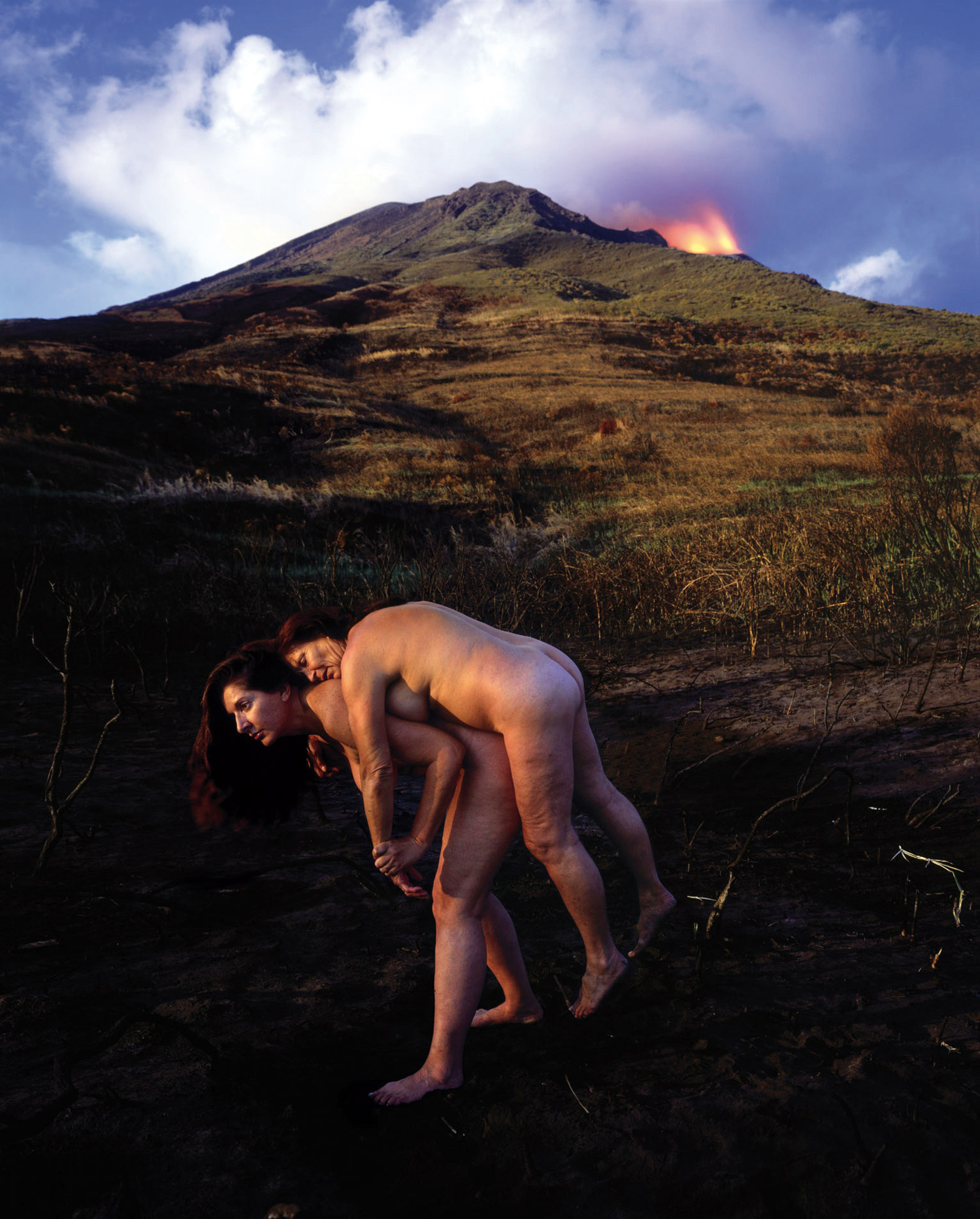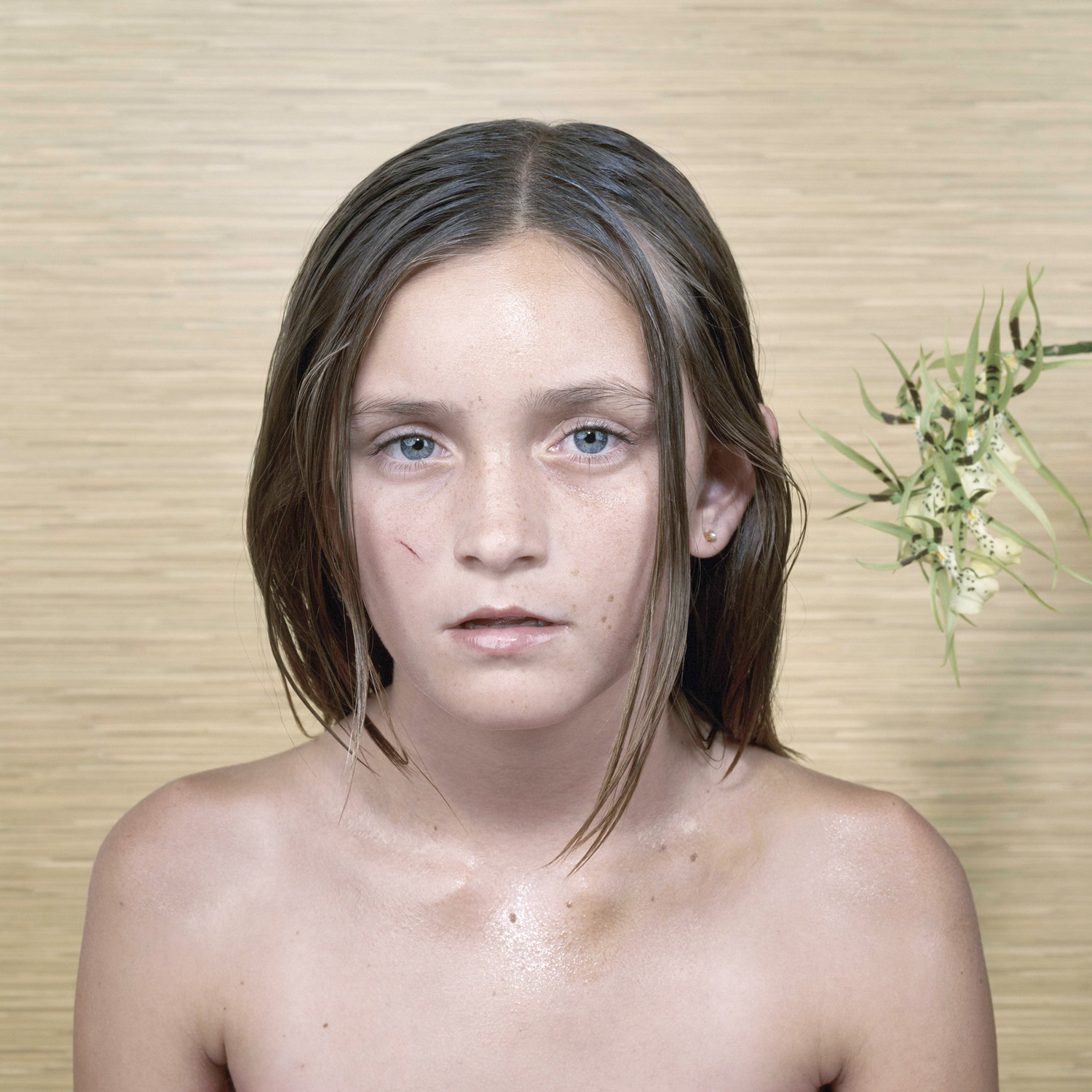
Andrea Bellini: Let’s start at the beginning. Is there a real beginning? What are the moments and the intuitions that established your language?
Giulio Paolini: “Beginning” is a relative term. The founding moment, the beginning, already includes the ending: the choices we make are made forever, the artist is launched into an orbit, and he stays there perpetually, completing continuous and eternal rotations and revolutions… In art you go nowhere. It is useless to look for a way out; you’re already in paradise.
AB: During your formative period, which artists were most important to the development of your career? Which artists have you felt closest to?
GP: Many different artists, and usually because of their personal adventures rather than because they belonged to one period or another, to one tendency or another. I have worked on a project for a new exhibition. They are four works: Una vita normale (A Normal Life), Una doppia vita (A Double Life), Vite parallele (Parallel Lives), La vita eterna (Eternal Life), all exhibited at the same time in two galleries, Christian Stein and Gió Marconi in Milan. They are four episodes in which names, figures, time and locations blur into one another in random order. De Chirico, Velazquez, Ingres, Vermeer, Klein, Fontana, Watteau, Chardin are the artists I call upon to share a further Ipotesi per una mostra (Hypothesis for An Exhibition).
AB: Your works from the beginning of the ’60s were based on the analysis of the structures of vision — works like Disegno geometrico (Geometrical Drawing), a canvas painted with tempera on which you drew just the geometric grid on the surface of the canvas, the preliminary process for any representation. What drove you to do this? Did you feel you had to do a tabula rasa?
GP: The ‘launching pad,’ to use a metaphor, detaches you from the Earth, and launches you into orbit. The trajectory is not really a decision but rather an ‘obligatory’ path: what we want to do, at least in the beginning, is go on a journey with no obstacles… or even better: the obstacles are the first things that we try to remove; the point is to liberate the field.
AB: Your work is built around the rigorous idea of a self-reflective art, dedicated to thinking about itself. Nevertheless, the idea that is pursued is always connected to the dimension of sight, and this aspect lends your work a specific connotation in the context of the conceptual movement. What is an image? Why is this still so important?
GP: What we usually mean by an image is something personal, subjective, reflecting the author’s vision. I would like to underline that in my opinion it is not really related to the author but rather to a pre-existing, hidden element (a given that is not given), which has to be revealed, made to emerge before the expectancy of our gaze.

AB: You have worked on the idea of appearance, of doubles, of copies of reality. What is the origin of this idea? Is it the limit of the act of perception?
GP: The act of perception is a limit but also a real fact: we know and we believe to be real that which we touch and which we see, that which we perceive. Perhaps reality itself is limited? I don’t think it is paradoxical in the least to believe it to be insufficient… For this reason, even if we know its limits, we prefer to look at a painting instead of looking at a sunset; we prefer (or at least I do) the image to the phenomenon itself.
AB: You once wrote: “Objective and absolute are the two terms, the two poles between which my work exists.” What is objective and what is absolute in art and in reality?
GP: Today, and at my age, I can see more clearly another set of contrasting ideas, constituted by the two poles of the present and history, by which I mean contact and distance, noise and silence.
AB: Starting with the famous Giovane che guarda Lorenzo Lotto (Young Man Looking at Lorenzo Lotto), you have created a fine and complex web of relationships and references to the masters from the past and their works. However, your work is not interested in quoting other artists. What is your relationship with art history?
GP: This is an interesting question for me, one which already includes a part of my answer: art history is not a sequence of soloists (of single authors), but rather a system of voices in unison (history). It’s not a choir but a score for many voices in counterpoint. What I think is that the role of the artist, today and always, is not to take a place in the crowd in order to wait his/her turn to speak, but rather to stand apart, to not take part, to look for a point of equilibrium in the double role of author/spectator.
AB: What does the presence of photography mean in your work?
GP: On other occasions I have already discussed the ‘advent’ of photography, which was decisive in the history of language and media: it is truly a ‘miracle’ thanks to which the truth of time and place finds a way to declare and manifest itself. Personally, I have never taken a single photograph, but, again and again, I have employed photography as a document, a reproduction of other images.
AB: At the end of the ’70s and the beginning of the ’80s, your work began to enter the realm of theater and to reveal new elements, like illusions of perspective and references to myths. What did this mean?
GP: The turning point took place halfway between those two decades, with one work, La caduta di Icaro (Icarus’s Fall), which was a depiction of ‘falling off a horse.’ In that work, and in others that followed, the figure of the author enters (or falls into) the scene, not in order to point out the lines of the drawing but rather in an attempt to find the drawing’s uncertain and confused traces.
AB: Is there a work made by any other artist that you would like to be the author of?
GP: Maybe that Ritratto di giovane (Portrait of A Young Man) painted in 1505 by Lorenzo Lotto… in order to close the circle and allow myself a rest.
AB: What has the role of the Arte Povera movement been? What has it meant for you?
GP: It was a beautiful time, of course, even if it was a bit on the fringes; more recently it has become a social event. In some periods, it is right for a tendency or a movement to have a label, but every label decays and fades after a while, and what remains, when something does remain, has to be consumed in small doses.

AB: What is something that you cannot accept, that you detest more than anything?
GP: Big numbers, big meetings, high circulation numbers, high audience ratings, majorities, minorities, leading forces, referendums, political campaigns, spontaneous expressions (like graffiti and street posters), the strategies employed to achieve a result and the belief that you have fulfilled your aims.
AB: You have had a long and satisfying career. Is there anything that you regret, or any hope you were not able to fulfill?
GP: I have no regrets that I know of… and anyway I would find it too hard and presumptuous to try to find one.
AB: What are you working on these days?
GP: I am working on the sets for a production of Wagner’s Parsifal that will open the next season of the Teatro San Carlo in Naples, in December. I am really enjoying the process of illustrating a story in which almost nothing happens for almost five hours, but during which — as we said at the beginning — perhaps for this very reason everything seems to be touched upon.
AB: What is contemporary art? What is the art of today?
GP: Art is all and always contemporary, but we can not expect that it will always refer to the here and now: the horizon is too vast and unknown, if I look closely it doesn’t seem that the present has a particular interest. After all, art doesn’t speak, and certainly doesn’t speak about contemporary concerns: its ability to communicate something is related to its silence, which we can perceive despite the clamor that attacks us every day.
AB: To whom is an artwork destined?
GP: To no one. Not, alas, to its author, who gives it to us, and in so doing is deprived of it; not to the spectator, who believes and deceives himself into thinking that he is the recipient and that he can possess and evaluate it. An artwork cannot be truly given to anyone, and this is its true value and its splendor. Only in this way can we enjoy it disinterestedly, without expectations and without requiring any answers.
AB: Speaking of being self-reflective, please ask yourself a question and give yourself a probing answer.
GP: I accept the offer, but I would like to address it to the reader who has followed us to this point. What has pushed us toward discussing issues that are so detached from politics, society or statistics? What is the meaning — if we can use this term — that we believe we can find in such conversations?





